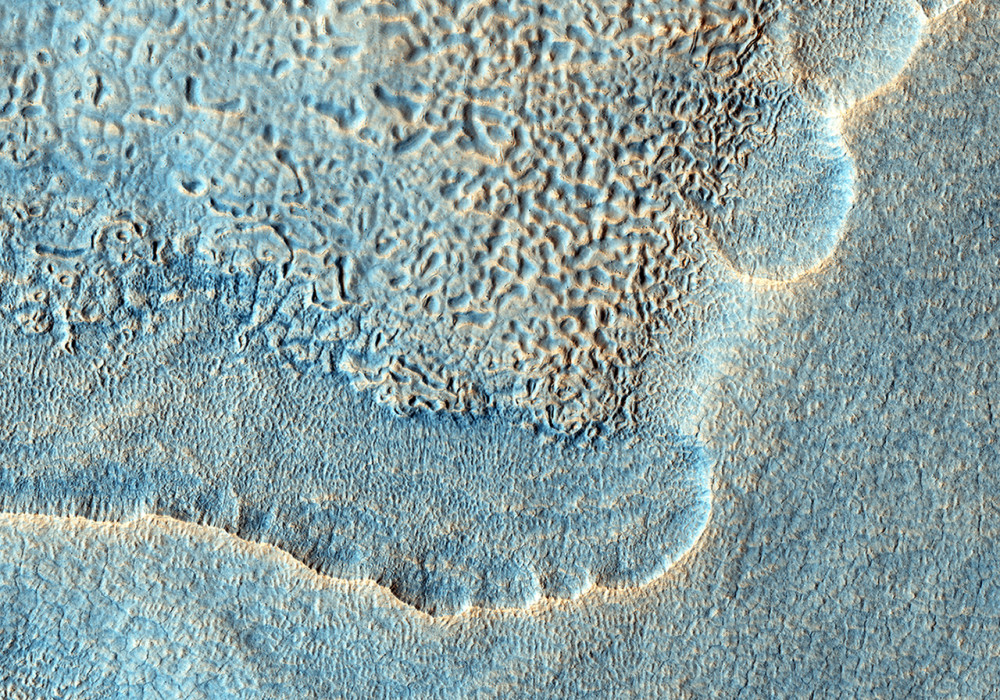The objective of this observation was to examine the edge of impact ejecta from a crater to the north-west of this area (north is up, west is to the left). The ejecta visible in the top left of this image seems to be lower than the surrounding surface .
This is unusual because impact ejecta is laid down on top of existing ground. The ejecta also seems to have pits. Perhaps the hot ejecta fell on frozen ground and melted the underlying ice?
Written by: Veronica Bray (audio: Tre Gibbs) (30 April 2014)
More info and image formats at http://hirise.lpl.arizona.edu/ESP_036182_2230
Image: NASA/JPL/University of Arizona
